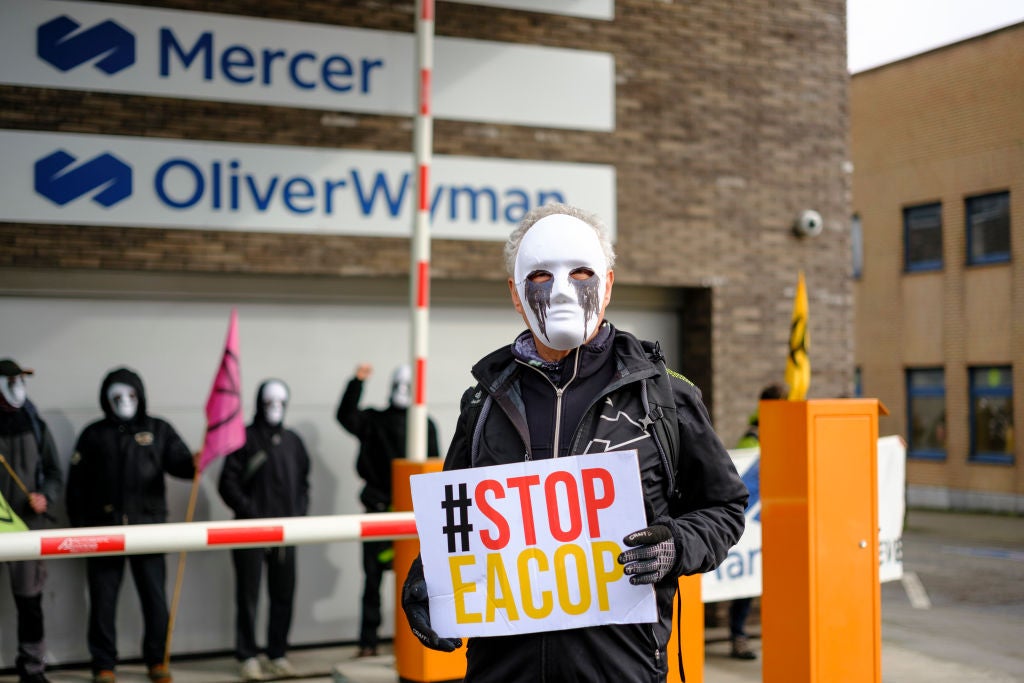
When Eldar Saetre rang the bell at the Oslo stock exchange on 1 October 2007 he wasn’t just signalling the start of the day’s trading, he was ringing in the birth of a new company: StatoilHydro.
Formed from the £15bn merger between the oil and gas operations of Statoil and Norsk Hydro the new company, which is 62.5% owned by the Norwegian government, is the biggest offshore operator in the world. With proven oil and gas reserves of 6.3 billion barrels, StatoilHydro employs 31,000 people in 40 different countries and has a stock market value of over $100bn.
“Statoil and Hydro were able to achieve results competitive with those of the major international oil and gas companies,” Saetre, chief financial officer of StatoilHydro , said on the day the company launched. “As a result, we now have a very good starting point for future value creation, which can also bear comparison with the best worldwide.”
So how did the merger come about? What are the benefits of the new company? And what are its prospects for the future?
STATOIL-NORSK HYDRO MERGER
In 2005 Statoil was responsible 60% of petroleum production in Norway, generating $63bn in revenue.
How well do you really know your competitors?
Access the most comprehensive Company Profiles on the market, powered by GlobalData. Save hours of research. Gain competitive edge.

Thank you!
Your download email will arrive shortly
Not ready to buy yet? Download a free sample
We are confident about the unique quality of our Company Profiles. However, we want you to make the most beneficial decision for your business, so we offer a free sample that you can download by submitting the below form
By GlobalDataNorsk Hydro, the world’s third largest aluminium producer, operated 13 oil and gas installations in Norway and generated $28bn in revenue. The intention to merge the oil and gas operations of the two companies, the biggest on the Oslo stock exchange even then, was announced in December 2006.
Over the next ten months various regulatory bodies, from the Norwegian Storting [parliament] to the European Commission, rubber-stamped the move and in October 2007 the deal that saw Hydro’s shareholders take 32.7% and Statoil’s shareholders 67.3% of the new company became a reality.
“This merger is driven by a growth ambition,” former Statoil CEO Helge Lund, now in the same position at the new company, said prior to the merger being complete. “By combining the strengths of both organisations, the merged company will be able to pursue more opportunities and take on more tasks. In addition we will be able to realise cost synergies through more efficient operations and economies of scale.”
AIMS
If anyone was wondering what StatoilHydro wanted to achieve when it became the biggest offshore operator in the world, they didn’t have to wait long. On the day they launched, the company revealed its plan was to maximise the value creation on the Norwegian Continental Shelf (NCS) through aggressive exploration activity, project development and improved recovery.
It also expressed intentions to build strong and internationally expansive upstream positions based on technology and expertise developed on the NCS, develop further strong gas and downstream positions based on their leading position as a supplier of oil and gas, tackle the climate challenge with technology and industrial solutions and develop a stronger position in the field of new energy.
“We want to be recognised as a technologically competent and innovative company that creates long-term value for our shareholders through open and good collaboration with partners, suppliers and authorities,” says Helge Lund. “We have a clear values base and big ambitions.”
CHANGES
Merging two large companies together is no simple task. Around 9,000 staff were asked to change jobs to become part of the new company and some former Hydro staff have had to relocate to the headquarters in Stavanger, the traditional home of Statoil. How has the integration gone?
“Seamlessly,” says StatoilHydro’s media relations chief Kai Nielsen. “The two companies were not that different so the integration has been smooth.
“We asked around 9,000 people what jobs they wanted in the new company and 80% got their number one or number two choice, which is very high. Quite a few companies have problems when they merge like this but we haven’t had any. It’s running very smoothly.”
BENEFITS
Prior to the merger Statoil revealed it hoped the new company would allow it to save NKr4bn through reduced operating costs. It would also allow them to compete globally on bigger projects, guard against a future drop in oil prices and solve the problem peculiar to the oil and gas industry: the diminishing workforce.
“Together we will be able to compete for larger shares in projects,” says Helge Lund. “We will ensure a more efficient delivery of new resources by eliminating duplicate activities in terms of corporate and administrative overheads, operational support and information technology systems. In a highly uncertain price environment, we have to be prepared for lower prices. So we’re focused on capital cost discipline. We are continuing to stay among the best performers in the industry.”
According to Matthew Hall, European energy analyst at Global Insight, the merger will have positive repercussions for StatoilHydro both at home and abroad.
“Domestically, as the two main players have merged together, they have essentially eliminated the competition,” he says. “It also allows them to compete in the global market. They are now in the second tier of companies behind the super-majors Exxon, Chevron, Shell, BP and Total. They produce 1.7 million barrels of oil or equivalent a day, which is only 5,000 to 6,000 less than Total. Size is beneficial in this market and they are now the largest offshore player in the world.”
TECHNOLOGY
Technology is at the heart of StatoilHydro’s business plan. Having gained a reputation for technological excellence thanks to their work on the NCS, the company is looking to further develop its technological capabilities, focusing on exploration technology, reservoir management, subsea field development, gas chain technology and environmental technology.
With the world’s oil and gas resources increasingly being discovered offshore in hostile environments like the Arctic, StatoilHydro’s technological capability could give them a market-leading position.
“The history of Statoil’s NCS activities has been one of having to overcome one enormous technical challenge after another,” says Dr Antony Buller, Statoil’s special advisor on technical development. “Operating under the harsh weather and environmentally sensitive conditions in the North and Norwegian Seas has necessitated the development and employment of innovative technology for which we have previously been benchmarked as the industry leader.”
FINANCES
The financial wisdom of the merger between Statoil and Hydro remains to be seen. Although the company took a 59% knock on its Q4 net income, down to NKr6.2bn in 2007 from NKr15bn the previous year, the figures are skewed by the huge restructuring costs of the merger and are part of a plan to take a short term hit in aid of longer-term gain.
“The merger has strengthened our financial capacity, our competence and resources base and thereby our competitiveness,” says Helge Lund. “The restructuring costs represent an investment to achieve significant synergy gains from the merger in the coming years.”
OUTLOOK
The tangible benefits of the StatoilHydro merger were not long in coming. Within a month of their creation StatoilHydro revealed that they had been awarded a 24% stake in the huge Shtokman gas field in the Barents Sea.
“The agreement will open a new page in our cooperation with the merged StatoilHydro,” Alexei Miller, chair of Gazprom, said when the deal was signed. “We have giant reserves of gas in the Barents Sea, while our partners from Norway have good experience in production and transportation of gas in harsh Arctic conditions. Our joint efforts will be the keystone of success in the Arctic.”
As part of the Shtokman Development Company StatoilHydro are rubbing shoulders with the super-majors. Gazprom is the main partner with 51% equity interest and the other major partner, Total, has 25%. Is this the way forward for StatoilHydro? Can they continue to work alongside the super-majors and even break into that top tier themselves one day?
“We have to be realistic,” says Kai Nielsen. “I don’t think we will ever be as big as Exxon and Shell, but we are now amongst the top ten biggest companies in oil and gas. The reason for the merger was growth. Being a large company is important in this business because of the risks involved.”
Although he thinks it is a long way off and it would take something spectacular to happen in the market, Matthew Hall wouldn’t rule out StatoilHydro joining the elite group of super-majors at some stage.
“There’s no reason to say they won’t get there in the end,” he says. “Oil production in the NCS might be declining, which is one of the reasons they have merged together so they can focus on the global market. But increasingly the industry is looking to offshore and deepwater areas for its oil. StatoilHydro has considerable expertise in this area. They also seem to be building a good relationship with Gazprom so, although the top tier is still a very long way off, I’d expect to see grow steadily into the future.”




